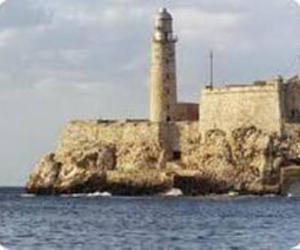Complex Cuba: Island excursion reveals many sides
- Submitted by: manso
- Travel and Tourism
- 10 / 04 / 2010

As a graduate student working on Afro-Cuban journalism at the turn of the 20th century, I got to travel to Havana, Cuba, this summer for five weeks of research at the José Mart' National Library.
At the Miami airport, aside from being the lone non-Cuban on this particular flight, I had by far the least baggage. Everyone else was laden with food, bicycles, consumer electronics and car tires - enough goodies and supplies for years' worth of missed Christmases and birthdays of family back on the island. It is, of course, nigh impossible to deliver such goods any other way.
I had looked forward to seeing Cuba from the air. I imagined it would be a bit like the scene in King Kong where the film crew approaches the mighty ape's island home, shrouded in mystery and a refuge to any number of dinosaurs and insects.
The actual approach was a bit more prosaic - just a regular old air strip and a terminal with a sign that read, "Patria es humanidad" ("Humanity is our nation"), the first of many nationalistic slogans I saw emblazoned all around the city.
I caught a cab to my lodging in Central Havana, a district of shabby, yet stately colonial houses and narrow streets reminiscent of New Orleans' French Quarter.
In between thumbing through 100-year-old newspapers at the National Library, I explored Havana, a city with five centuries of interesting buildings and landmarks.
The first point of interest I discovered was the picturesque Malecón, the coastal roadway that runs along the Bay of Havana. During low tides, the bay's rocky edge is full of fishermen. When the tide is high, school kids hurl themselves over the protective wall into the churning sea. A few hundred yards out, huge tanker and container ships lumber into the nearby harbor under the watchful eye of the towering Castle Morro, a sentinel that once guarded the bay from marauding pirates and English warships.
By night, hundreds of Habaneros head to the Malecón to beat the sticky Caribbean heat. I witnessed a troop of mohawked youths chanting a bawdy song and a trio of jesters in full motley garb who invited me to watch their show at a nearby hotel.
Havana's hotels, incidentally, are some of the only places in the country with Internet access. After hearing from another American student about the Hotel Nacional and its amazing wireless Internet, I decided to investigate for myself. The hotel, built in an age when American tourism was a cornerstone of Havana's economy, was once a glamorous getaway for stars like Frank Sinatra and Marlon Brando. My guidebook noted it was the site of a grand mafia summit where bosses divvied up control over the burgeoning Cuban casino industry while dining on local manatee and flamingo.
While strolling the hotel's impressive grounds, which overlooked the Malecón, an old man appeared out of nowhere - a tour guide - and suggested I go into a nearby cave.
I entered a series of underground passages built during the Cuban Missile Crisis of 1962. The bunker went so deep I worried we'd eventually get to a room full of gullible tourists' bones.
On the weekends, I enjoyed trips to the movie theater, which shows films from around the world for about 5 cents a ticket. Main attractions were the Michael Jackson documentary This Is It and Crazy Heart, which was translated into Rebel Heart in keeping with the Cuban love for all things rebellious.
After my 35 days were up, I'd completed my research and managed to lose a few pounds walking almost everywhere and eating peanuts for lunch.
Indeed, I got the feeling Americans and Cubans have largely moved beyond the Cold War mentality of mutual suspicion.
It was perhaps a good sign many local soccer fans expressed admiration for the U.S. World Cup team and urged me not to give up on their chances. It was also a sign of the times that Georgia Gov. Sonny Perdue came to town for a few days on a trade mission.
Finally, to my surprise, I was not the only non-Cuban on my flight back to Miami, as a church group from Wisconsin was headed home after spending a week helping to rebuild lingering damage from Cuba's devastating 2008 hurricane season. Proof that "patria es humanidad" is a sentiment Americans can get behind, as well.
By: Kyle Doherty • Clarion-Ledger correspondent • October 3, 2010
Source: www.clarionledger.com/apps/pbcs.dll/article?AID=201010030357
Comments